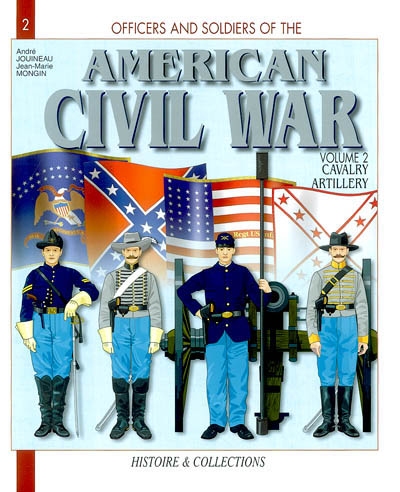en savoir plus

Permet à tous ses détenteurs d'obtenir 5% de réduction sur tous les livres lors du retrait en magasin (réduction non cumulable avec les réductions de type étudiant).
Offre également un certain nombre d'avantages auprès de nos partenaires.
Avec les favoris, retrouvez dans un espace les sélections effectuées au fur et à mesure de vos navigations dans le site.
Constituez pour votre usage personnel vos listes de livres en prévisions d'achats futurs et votre sélection d'articles, dossiers, événements, vidéos ou podcasts préférés ou à découvrir plus tard...
Il suffit simplement de cliquer sur "Ajout Favori" sur chaque page qui vous intéresse pour les retrouver ensuite dans votre espace personnel.
Requiert un compte Mollat
Requiert un compte Mollat
- Sciences humaines - Histoire
- Actualité internationale
- Sécurité nationale - Défense
- Sécurité nationale ou Défense du territoire
Officers and soldiers of the American civil war : the war of secession. Vol. 2. Cavalry, artillery
Auteur : André Jouineau
Auteur : Jean-Marie Mongin
en savoir plus
Résumé
Panorama des uniformes des soldats et officiers des unités de cavalerie et d'artillerie des armées de l'Union et de la Confédération qui se sont affrontées entre 1861 et 1865 lors de la guerre civile américaine. ©Electre 2025
Quatrième de couverture
Operations during the American Civil War were dictated mainly by geography: the Eastern half of the United States is divided into two quite distinct regions by the Appalachians. To the east are the most populated states, the main rail and road infrastructures and the capitals of the two belligerents, only 95 miles apart. To the west, the land was wilder, under-developped and lightly populated.
The cavalry was rarely used en masse on the battlefield except towards the end of the war by General Sheridan, during his Shenandoah Valley Campaign, in 1864. It fought preferably dismounted; most cavalry charges were sacrificial actions, used to gain time covering a retreat or bringing up re-inforcements. Cavalrymen were used especially as scouts to protect their army's advance and discover the intentions of the adversary.
The artillery included some of the most professional men in the army, because of the technical demands of their arm. An artillery limber team could unhitch and fire a cannon within 30 seconds and hitch up in one minute, a whole battery took three times as much time to carry out the same manoeuvres. Each cannon had about 100 shots, of which three quarters were full shellsxxxxx, the rest explosive shells and grapeshot. In one hour a battery could run out of ammunition if it fired non-stop.
Within the space of one hundred and sixty pages, this two volume work presents the broadest panorama possible of the uniforms worn by the combattants in this conflict. The most characteristic features and the principal organisational structures are shown in the following chapters in the form of a small practical guide.
Fiche Technique
Paru le : 01/02/2000
Thématique : Sécurité nationale ou Défense du territoire
Auteur(s) : Auteur : André Jouineau Auteur : Jean-Marie Mongin
Éditeur(s) :
Histoire et collections
Collection(s) : Officiers et soldats
Série(s) : Officers and soldiers of the American civil war : the war of secession
ISBN : Non précisé.
EAN13 : 9782913903005
Reliure : Broché
Pages : 82
Hauteur: 24.0 cm / Largeur 20.0 cm
Épaisseur: 0.6 cm
Poids: 254 g

